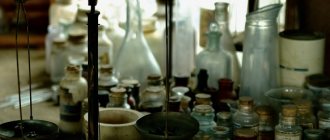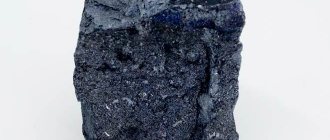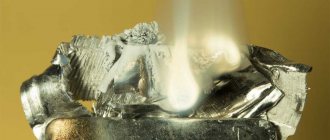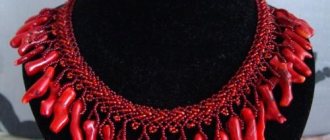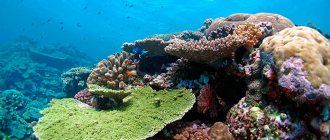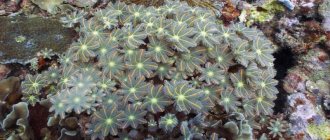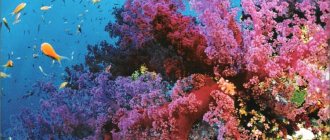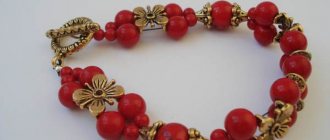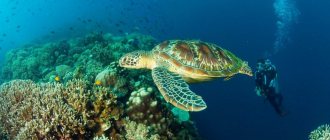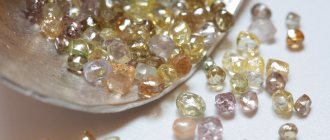Friends, the material below is intended for those who are just getting acquainted with the concept of “marine aquarium” and are beginning to understand what corals are and what types they come from. Don't worry, we've all been in your shoes. Once upon a time, I was confused for a long time by the abbreviations “LPS” and “SPS”, dividing all corals into “beautiful”, “brown” and “I want him to do Viu-Viu!” When a new aquarist starts reading about marine systems, there is a wealth of new information, words and acronyms that are not used in freshwater aquariums. Of course, your head is spinning and you really need to remember the names of the corals. And everything at once! Now I’ll try to explain it as simply as possible in groups
So, there are four main groups of benthic (attached to the bottom/rock/glass) aquatic organisms, which we all call corals: soft corals, semi-hard corals (LPS-corals), hard corals (SPS-corals) and anemones (anemons). ). By the way, the latter have nothing to do with corals, but this does not prevent hobbyists from classifying them in this group. Let's look at each group with examples.
Are corals animals or plants?
Despite the fact that corals look like stones, and many of their features are similar to plants, they are still completely related to the animal world. That is, in essence, they are animals, or more precisely, aquatic marine invertebrates of the cnidarian type - the material of the skeleton of a colony of coral polyps.
These living creatures live in warm waters; the depth of their habitat varies, but does not exceed 20 meters. It is noteworthy that the most comfortable water temperature should not be less than 21°C. Polyps simply do not live in cold waters.
ANEMONES
We wrote separately about anemones and their classification in an article about how to transfer anemones to your aquarium after purchase. In general, anemones are not classified as corals. These are close relatives of jellyfish in the hydrobiont class, but this does not matter to most hobbyists. Many experienced sailors believe that the sea anemone should not be placed first in a fresh aquarium. We are categorically against this opinion and believe that the sea anemone should be one of the first to be planted if it is on your wish list. The problem is that anemones must crawl around the aquarium in search of the perfect place for themselves. They look for the ideal flow, photosynthetic anemones also choose a “place in the sun” and this process can be very long. All soft corals on which the sea anemone crawls will close and eventually open again when it leaves them. All LPS and SPS corals that she walks on will be killed by her gore tentacles.
That is why it is best to plant the anemone first in the aquarium, give it time to gain a foothold in its chosen place and then plant the rest of the corals around it. This does not mean that in six months the sea anemone will not crawl again, but still the risks of losing neighboring corals will be minimized. Please note that sea anemones tend to inflate and deflate. You must calculate the space she will need at maximum body inflation so that she will not be able to reach nearby corals. In addition, when fed with protein meat, sea anemones actively grow, significantly increasing in size. Dividing anemones is a different story. The vast majority of them divide on their own, throwing out “babies” - small identical anemones next to them. Large anemone species can be divided by cutting the anemone directly across the mouth, but we strongly advise against doing this without years of experience dividing corals in this way. Removing a baby sea anemone from a stone (for example, for sale) is quite difficult. Sea anemones tightly hide their leg in a rock crevice and it is not easy to pick it out. The simplest method is to cover the small anemone with a PVC pipe so that it feels like there is “light at the end of the tunnel”. Most sea anemones are photosynthetics and in such a situation they will immediately crawl towards the light to preserve their lives. Thus, the sea anemone will crawl out entirely onto a smooth PVC tube, from which it is very easy to remove. By the way, in the same way they successfully get rid of anemone weeds: aiptasia and mayano. But that is another story.
What do corals eat?
They live together with algae - single-celled zooxanthellae. When the algae die, the polyp turns white, and after a while it also dies. This effect is scientifically called “coral bleaching.”
The fact that the polyp prefers just such a “cohabitation” is not at all surprising, because algae provide them with food. But in fact, polyps can feed in different ways: by consuming plankton or through photosynthesis, which is carried out by these algae.
It is this fact that explains why animals do not live on the seabed, because, as you know, there is no sunlight at all. Namely, its presence ensures photosynthesis, thanks to which polyps receive nutrients.
Nutrition of representatives of the class Coral polyps
Corals obtain nutrients in two ways.
- Individuals living at depth are capable of independently capturing plankton, microscopic crustaceans, fish larvae, and substances dissolved in water. For example, gorgonians have a branched structure and grow towards the current, which makes it easier to capture nutrient particles. For normal existence, polyps also need inorganic substances: calcium, magnesium, potassium.
- Many corals live in symbiosis with plants and receive nutrition through the process of photosynthesis (under the influence of sunlight, oxygen and glucose are formed from carbon dioxide, which are partially transferred to the body of the polyp).
Corals are able to change feeding paths depending on changes in the environment; with insufficient energy supply due to symbiosis, plankton consumption increases.
Please rate the article. We tried our best:)
Death of corals
Surprisingly, corals die due to microbes. According to the experiments carried out, it was revealed that the polyps had a trigger mechanism, which begins the process of their “death”. They die from the high content of organic matter in the water, as well as from sediment. It is clear that this phenomenon is the “work” of microbes.
How does this happen? When a large amount of organic matter begins to accumulate in water, it “attracts” various pathogenic organisms. Naturally, their growth increases and their number increases. This leads to a lack of oxygen and a change in the pH of the environment. This phenomenon is simply destructive for polyps.
The structure of coral polyps
The body shape of Coral polyps resembles a cylinder. There are three balls in the wall: ecto-, meso-, endoderm.
The ectoderm forms a covering layer, often has a calcareous structure, which forms a polypnyak after the death of the organism.
Mesoderm is a gel-like substance found in all cavities of the polyp. The internal space is divided into chambers using partitions. The number of chambers is equal to the number of tentacles.
The structure of a coral polyp
The upper pole is represented by a mouth opening, which is surrounded by brightly colored tentacles (which is why they were considered plants for a long time). At the lower end there is a sole, which serves as an attachment to the substrate. The mouth communicates with the stomach cavity through a long tube (pharynx), which is presented in the form of a wide flattened slit. At its ends there are long cilia that are constantly moving. Thus, the water necessary for the life of Corals continuously circulates in the cavity of the polyp. Oxygen and food enter here, and after metabolic processes, carbon dioxide and digestive products are removed.
They lead a sedentary lifestyle, attaching to the substrate and branching out like the branches of a plant. Each branch consists of small polyps that form a colony. Newly formed individuals attach to the previous ones, this is how they grow; the increase in height per year is 1 cm. Massive growths of coral polyps form reefs.
For protection, coral polyps are equipped with special filament-shaped organs with stinging cells; when a dangerous agent approaches, they are thrown out of the mouth.
Coral polyps can divide sexually or asexually (budding). When new individuals are formed, they swim freely in the water for some time, but soon they find a substrate, attach to it and begin development.
Other interesting facts
- In total, there are about 6,000 types of coral polyps, and only 25 of them are used in jewelry;
- from 1 to 3 cm - this is how much coral grows in a year!
- stinging coral is not actually one - it is a separate species that poses a danger to humans due to the toxicity of its tentacles;
- amazingly beautiful reefs and atolls are under threat of extinction due to human activity;
- off the coast of Australia is the longest atoll in the world, its length is 2500 km!
- if you look inside the coral, you can see peculiar rings there - annual, like those of trees;
- many fish and marine animals prefer reefs when spawning, this allows the eggs to be kept safe from various predators;
- reefs are a kind of plant filter, since they trap floating organisms around them that pollute the water.
RESULT
In fact, it is very rare to find marine systems in which only one class of aquatic organisms listed above is present. Mixed reefs look the most beautiful: when there are a few soft umbrellas and mushrooms; and there are fluttering euphyllias and incredibly beautiful chalis; and there are powerful bushes of shaggy seriatopors and acroporous horns peeking out from behind the stone. But at the same time, the more soft corals there are in your reef, the simpler and easier it will be to care for it and keep the aquarium beautiful and fragrant. The more SPS corals there are, the more money you will spend on maintaining the aquarium and the more indignant your significant other will be about the length of time spent caring for the aquarium. For example, here is a video of a mixed aquarium with a predominance of soft corals. Beautiful, isn't it? This aquarium is located in Lutsk in the Decorative Ribka store.
Here is the same mixed reef, but with a predominance of hard corals. This aquarium is located in Boyarka, not far from Kyiv, and the owner of the system is a fan of marine aquariums.
And here is another successful project of a hobbyist from Kyiv, which clearly shows that even 100 liters with a side sump can be made very beautiful:
I would especially like to say something about the coral planting.
If we take it as an axiom that you have a good lamp designed specifically for your aquarium, then the planting scheme should be as follows: - the lower part of the aquarium (minimal lighting + minimal airflow): soft and LPS corals that do not require strong lighting - the middle layer of the aquarium (medium light): LPS corals and low-demanding SPS corals (e.g. seriatopora, stylopora, stylophora, montipora) - top of the aquarium (maximum light): all SPS corals and LPS corals with a wide range of lighting requirements (Duncan, Euphyllia etc.)
In any case, it's up to you to decide. And we, as always, will help and advise
And we, as always, will help and advise
How to choose
Before you go shopping for coral, you need to put the aquarium in order and restore the ecological balance inside. Only after this you will go in search of new inhabitants:
- The purchase of coral should only take place in a specialized store. But it’s better to refuse the idea of taking a polyp from a friend, since in this way you are more likely to transfer bacteria and other substances from his aquarium to yours, which can provoke a surge in diseases in its inhabitants.
- When buying coral in a store, make sure that you are given particles of substrate along with it. This is necessary in order to increase the viability of the acquisition. If you are offered a polyp without a substrate, you should refuse; most likely, it will not take root.
- Before purchasing a particular polyp, be sure to find out with whom its proximity is acceptable. Aggressive and non-aggressive species do not get along well with each other. Some bottom dwellers emit substances that can be harmful to other inhabitants of the aquarium or even to humans.
Purchasing coral should only be done in a special store
Consider the conditions that have already been created in your aquarium. This applies to water temperature, acidity, hardness, lighting. Not all polyps fit these characteristics.
Types and classifications
Coral polyps are divided into 2 large subclasses: six-rayed and eight-rayed .
Six-rayed coral polyps (Hexacorallia) are marine solitary or colonial organisms with a multiple of 6 tentacles. Rarely are polyps with other multiples of tentacles (5, 8 or 10). There are 4,300 species of six-rayed coral polyps. The most famous representatives of this subclass are sea anemones. They do not have a hard skeleton and do not participate in reef formation. Anemones have adapted to survive on the reef by entering into symbiosis with other marine animals.
Clownfish live in thickets of sea anemone tentacles. Moreover, each fish remains with the selected sea anemone for life. Clownfish are covered in a special mucus that makes them immune to sea anemone venom. More precisely, the stinging cells of the polyps do not work when they come into contact with the slippery skin of the fish. Thus, the sea anemone protects the clown fish from predators, and in return, it periodically cleans it of parasites.
Coral reef. Corals and coral polyps.
Another example of mutually beneficial cohabitation is a pair of sea anemones and a hermit crab. The polyp settles on the shell of the crayfish and, thanks to it, travels along the seabed. In exchange for this, the hermit crab receives active protection from numerous enemies.
The most numerous order of six-rayed coral polyps are madreporous or stony corals (Scleractinia). Currently, 3,600 species have been described. They are characterized by the presence of a calcareous skeleton. These corals are the main reef-formers. Single stony corals can reach a size of 50 cm in diameter and live at enormous depths of up to 6 km. But most of the representatives of this order are small (up to 5 mm) polyps. They organize a huge colony, consisting of hundreds of thousands of polyps and reaching a weight of several tons.
polyps that have a corolla consisting of eight tentacles. This is the oldest species, the fossil remains of which were found in deposits whose age is estimated at 145 million years. Presumably they all descended from one common ancestor. These are very small polyps - their size usually does not exceed 1 cm.
Most eight-rayed coral polyps have a hard, calcareous skeleton. Participate in reef formation.
Coral reef. Corals and coral polyps.
Content recommendations
In order for the coral to feel free inside the aquarium, the tank must be at least 400 liters. Other tips:
- The optimal water temperature for both corals and marine life is from +22 to +27 degrees Celsius.
- Make sure the water is clean, with good hardness and acidity levels. This is necessary to ensure growth for the marine inhabitants.
- The water must constantly circulate, thus purifying itself and creating a flowing effect.
- Lighting should be suitable for both polyps and other inhabitants. Keep your balance, otherwise the sea inhabitants will begin to die.
- Corals are best placed on a rocky bottom, where they calmly take root. You can fix it using special solutions or glue.
- If you notice dead corals in the aquarium, you should not get rid of them. They can also remain in the tank, turn to stone, and become a kind of decoration.
- Provide the corals with constant and adequate nutrition. To do this, study in advance what is edible. Some feed on phytoplankton, others on algae, and still others are predators and prefer small meat.
For the coral to feel good, the aquarium must be at least 400 liters
Determining when it is time to feed a coral is simple: as soon as it begins to produce polyps, it is time to serve food. But the size, quantity and quality of food depends on the type of coral itself.
Pros and cons of artificial products
Artificial corals for aquariums are easy to care for and affordable, so many aquarists purchase them to transform their tank.
Most often, such products are made of silicone or synthetic material, they are very easy to wash off dirt, and the appearance is no different from natural ones.
Artificial corals have many positive aspects:
- High practicality, environmental friendliness.
- Durability, duration of use. They are unpretentious to the conditions, they will not be affected in any way by a decrease in temperature or an increase in acidity.
- In specialized stores you can purchase artificial corals of any color and shape, thus creating your own spectacular compositions in the aquarium.
Mostly such products are made of silicone or synthetic material
However, at the same time, such products also have disadvantages:
- High price. High-quality artificial coral is expensive, as it must be as lifelike and durable as possible.
- Its artificial color is lost and fades over time.
- If you bought an inexpensive product, then do not rush to rejoice. Most likely, it is made of low-quality or toxic materials, which may harm the inhabitants of the aquarium.
Carefully monitor the condition of fish and invertebrates, and if after installing the coral they begin to behave differently, immediately remove the decorations.
Design options
Using corals on the bottom, you can create spectacular compositions, making the tank a real work of art.
Corals are combined with driftwood, artificial stones, and other decorative elements and accessories for aquariums.
Let's look at several options for beginners that you can do yourself.
A Tale from Coral
First, take care of what the background of the aquarium will be. Often aquarists use film or paint one side in solid shades. The bottom is lined with pebbles, shells, balls, and stones.
Often, for such a composition, artificial algae are purchased, which are placed in the corners.
Beautiful aquarium with corals and algae
Corals are placed on the rocks, which take several days to take root.
Pseudo-sea
This is also a common decor for an aquarium. To create, you will need a substrate, which consists of marble chips, quartz and sand.
In addition, shells, petrified corals, and futuristic “wrecks” of a ship can be used as decorative elements.
After the bottom is covered, pre-prepared polyps can be placed. It is better to do it chaotically, thus creating the effect of the seabed. Using your imagination, acquiring different types of corals, which can coexist with each other, you can create compositions.
Pseudo-sea version of the aquarium design
Coral is not only an aquarium decoration. This is a pet that requires proper care. It is very interesting to watch it, because the polyp also has its own habits, reactions, and most importantly, it adapts to the conditions of the tank and other inhabitants.
If your aquarium looks boring and lifeless, then it’s time to think about buying corals and turning it into a marine kingdom.
Have you grown corals in your aquarium? Share your experience with newcomers in the comments.
